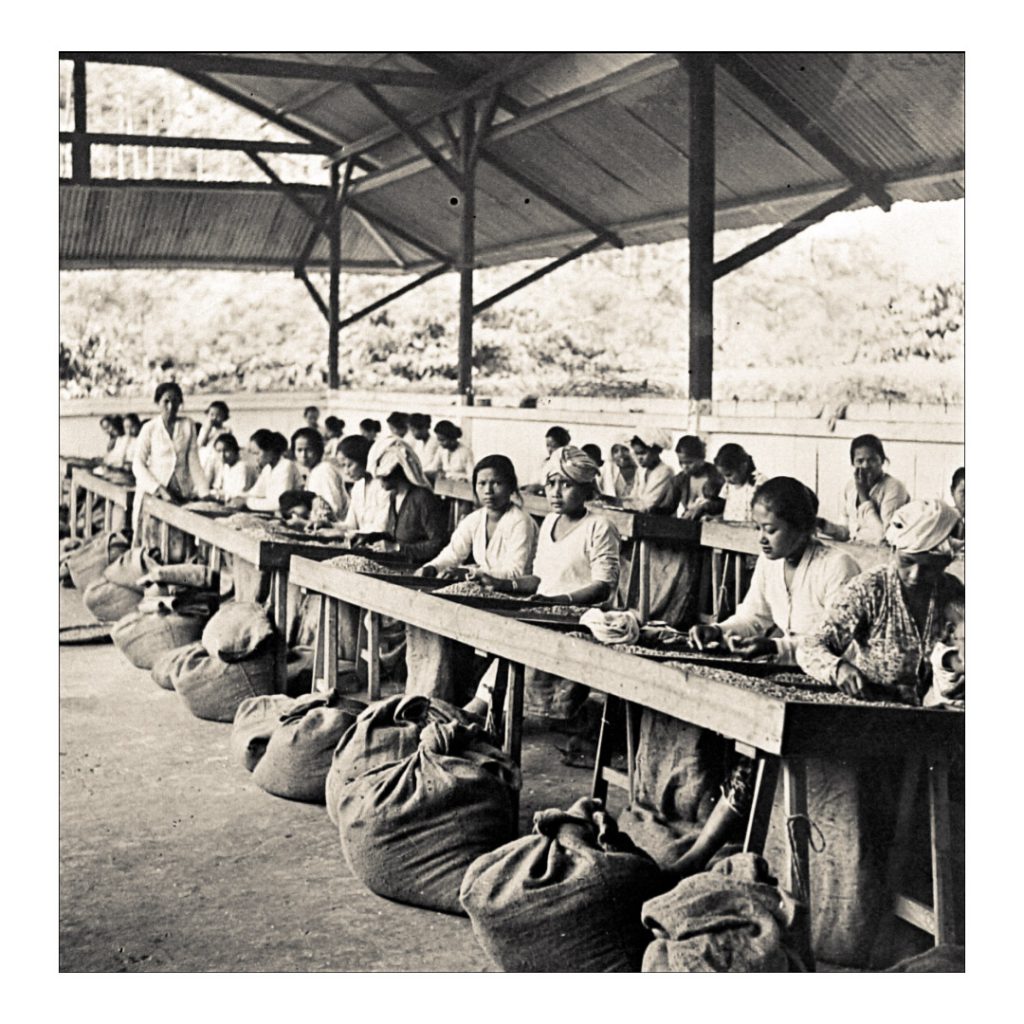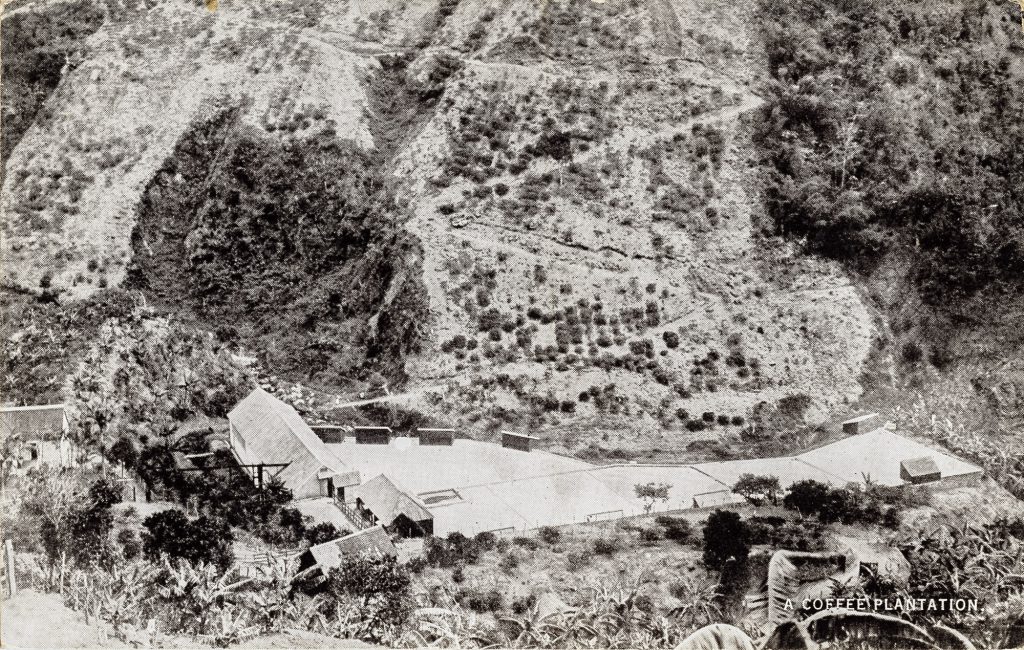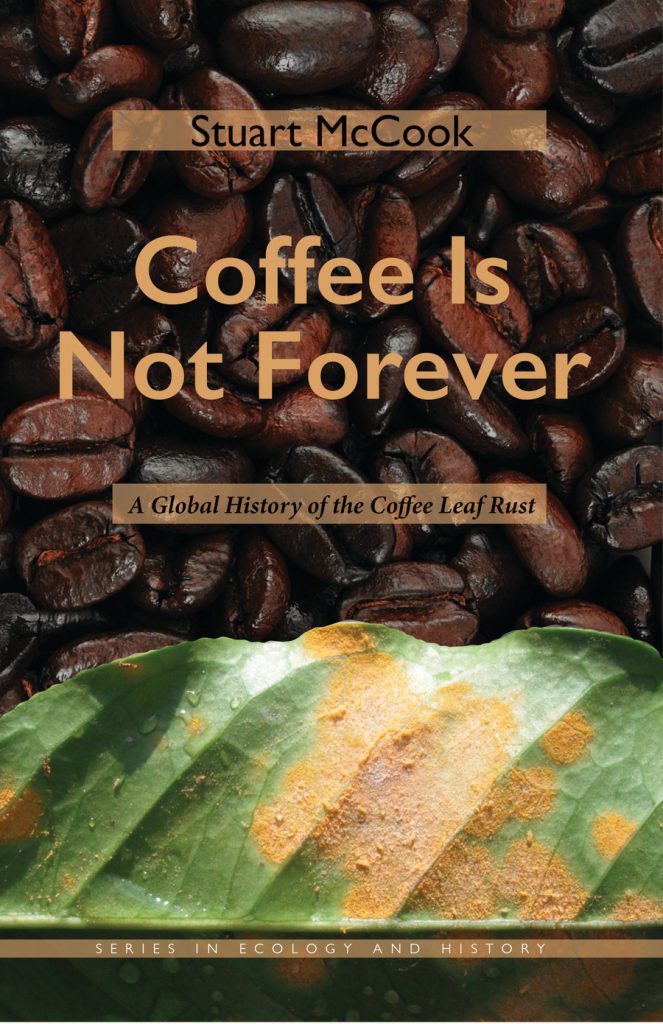
I’m interested in finding historical photographs of the main phases in coffee farming. There are countless historical photographs of the harvest, but far fewer photos of the other phases. So I was happy to find this photograph, which depicts the people preparing coffee seedlings to be transplanted from a nursery to a farm. This nursery was big, judging from the size of the field in the background — suggesting that it was a commercial nursery, or perhaps one that belonged to one of the larger farms. The nursery is mostly in full sun, although some forest is visible in the background.
The seedlings were carefully dug up with some soil around their roots, then wrapped in corn husks so that they could be transported from the nursery to the farm. This picture suggests that the labour was gendered — the men and boys are digging up the plants (or just standing around watching), while the women and girls are wrapping the plants. This labour involved people of all ages. In the background, the person standing, wearing a white hat and black coat, is better dressed than the rest, and may be the owner of the nursery or the farm.
The photograph was taken by Thomas Forsyth Hunt, a US agronomist who, at the time he took this photograph, had recently retired as dean of the University of California’s College of Agriculture (now UC-Davis). After he retired, he travelled through the West Indies and Central America, to study tropical agriculture. The UC-Davis Library has digitized many of these photographs, and made them available on their website.





